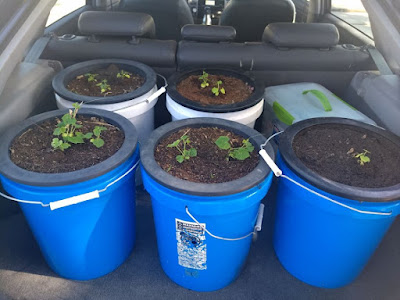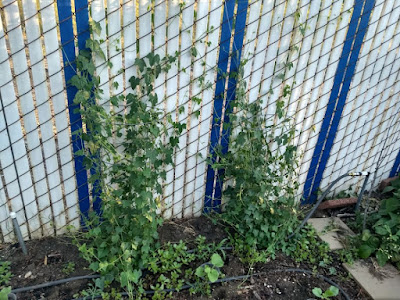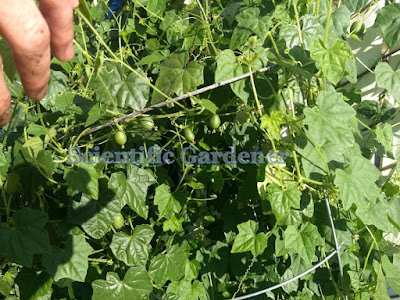2020 was the first year that I tried growing cucamelons, mouse melons or Sanditas (Melothria scabra). There were two primary reasons why I decided to grow them. The first was to be able to try them out. A lot of people had raved about their taste and their productivity. The second reason why I decided to grow them out was to produce high quality seed. Though there are some companies that produce high quality cucamelon seed, my access to this seed was spotty, at best – and I wanted to make sure that I was able to better understand how to grow it, harvest it and process the seed.
Knowing that cucamelons require a long amount of time to mature, I began them in 2-inch soil blocks early in the season, then transferred them to 10” hydroponic baskets. I was able to set the hydroponic baskets into 5-gallon buckets which I set in another part of the fertile garden until there was room along the south side of a chain-link fence.
The fence provided a perfect place for the cucamelons to thrive. They continued to grow, little by little up the fence and they became quite productive. Occasionally they would fall off, and I would harvest them. I continued harvesting them off the ground, little by little until it was the end of the season.To me, the taste of cucamelons is relatively bland. While they can be considered slightly juicy, the texture and taste are not extraordinarily exciting. The slight acidic flavor does not taste much like lemon. The best description I have for the taste of sanditas is “cucumber peel”.
Somewhere near the end of 2020 or beginning of 2021 I harvested the remainder of the cucamelons. In order to save time, I cut down the vines one section at a time and rolled them up like it was rug or large section of carpet. I then brought them over to a level concrete area and shook the mat of vine against the ground until the majority of the fruit dropped off. Then I inspected each section and picked off any remaining fruit. Instead of just composting the vine mats, I decided to utilize them as a weed block for large sections of the garden bed. The plants did an incredible job of suppressing weeds during the winter months and took quite a while to decompose.










































No comments:
Post a Comment
Dear Gardening Friends,
I look forward to learning more about gardening with you. Your comments help me recognize that gardening is a life-long journey.
To advertisers: Note that this blog is concerned with gardening and gardening techniques. Please do not attempt to advertise here by leaving a comment. Depending upon how egregious the comment is, it may be deleted.